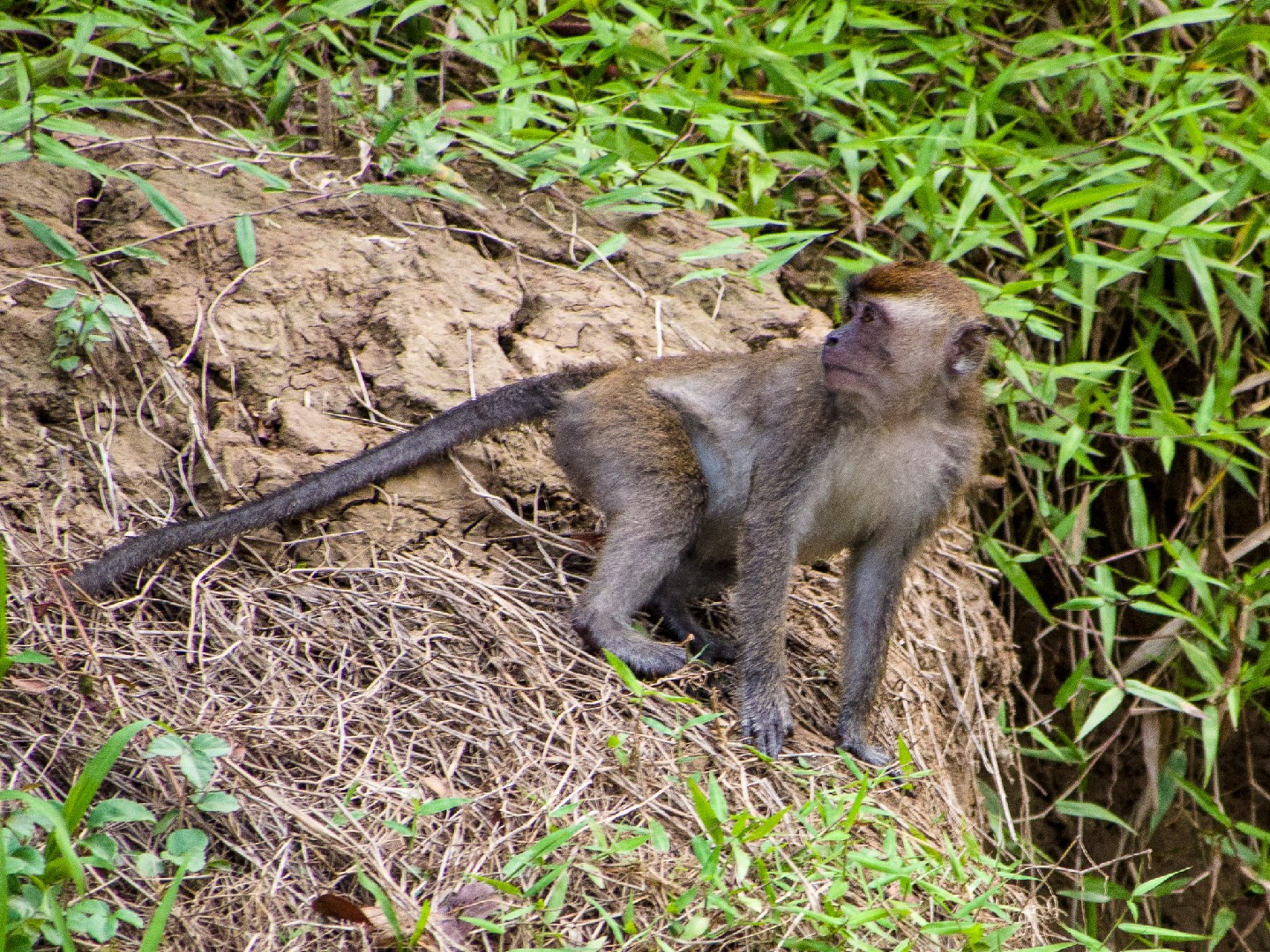Crab-eating macaque
A species of Macaques, Also known as Cynomolgus monkey Scientific name : Macaca fascicularis Genus : Macaques
Crab-eating macaque, A species of Macaques
Also known as:
Cynomolgus monkey
Scientific name: Macaca fascicularis
Genus: Macaques
Content
Description General Info
 Photo By Mike Prince , used under CC-BY-2.0 /Cropped and compressed from original
Photo By Mike Prince , used under CC-BY-2.0 /Cropped and compressed from original Description
The great macaque, long-tailed macaque or crab eater (Macaca fascicularis) is a primate species from the macaque genus within the family of verbena relatives.
General Info
Lifespan
25-30 years
Diet
Crab-eating macaque is predominantly an omnivorous species, with a diet consisting mainly of fruits. However, it also eats leaves, flowers, invertebrates, and occasionally small vertebrates. This species is known for its opportunistic and adaptable feeding behavior.
Appearance
Crab-eating macaque is a medium-sized primate with a slim body covered by coarse, dark brown or gray fur. It displays a long, flexible tail and its face, which is hairless and pinkish in color. Distinctive cheek pouches, used to store food, are observable. There are negligible differences in coloration or size between genders and various age groups.
Behavior
Crab-eating macaque exhibits diurnal and social habits, primarily inhabiting forests and developing complex, female-dominant social hierarchies. Outgoing and inquisitive, these animals forage for food collectively, with diverse diets including fruits, seeds, and small vertebrates. Notably, crab-eating macaque exhibits tool use in the wild, often using sticks to extract insects or honey from narrow crevices.
Population
Decreasing
Scientific Classification
Phylum
Chordates Class
Mammals Order
Apes Family
Old world monkeys Genus
Macaques Species
Crab-eating macaque